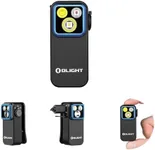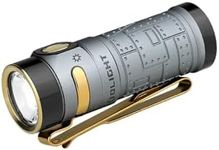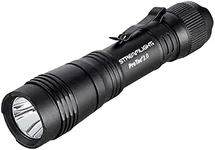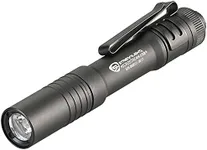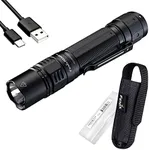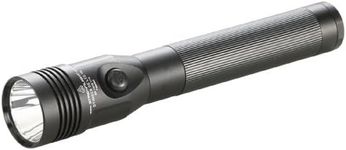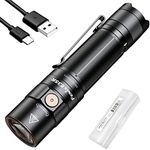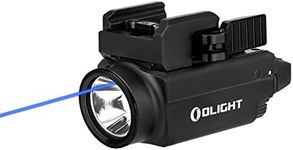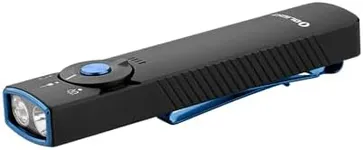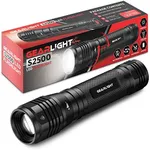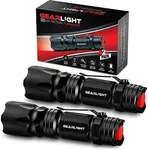Buying Guide for the Best Law Enforcement Flashlights
Choosing the right law enforcement flashlight is crucial for ensuring safety and efficiency in various situations. A good flashlight can help you see clearly in the dark, identify potential threats, and signal for help if needed. When selecting a flashlight, consider the following key specifications to find the best fit for your needs.LumensLumens measure the total amount of visible light emitted by a flashlight. This spec is important because it determines how bright the flashlight will be. Flashlights with lower lumens (100-300) are suitable for close-range tasks and general use. Medium lumens (300-1000) are ideal for most law enforcement activities, providing a good balance of brightness and battery life. High lumens (1000+) are best for tactical situations where maximum visibility is required. Choose a flashlight with lumens that match the typical scenarios you encounter in your line of work.
Beam DistanceBeam distance indicates how far the light can reach. This is important for identifying objects or individuals at a distance. Short beam distances (up to 100 meters) are sufficient for indoor use or close-quarters situations. Medium beam distances (100-300 meters) are versatile for both indoor and outdoor use. Long beam distances (300+ meters) are necessary for outdoor patrols or search and rescue operations. Consider the environments you work in to determine the appropriate beam distance for your flashlight.
Battery LifeBattery life refers to how long the flashlight can operate before needing a recharge or new batteries. This is crucial for ensuring your flashlight is reliable during extended shifts. Short battery life (1-3 hours) may be acceptable for brief tasks or if you have easy access to spare batteries. Medium battery life (3-10 hours) is suitable for most law enforcement duties. Long battery life (10+ hours) is essential for prolonged operations or situations where recharging is not feasible. Choose a flashlight with a battery life that aligns with the duration of your typical assignments.
DurabilityDurability refers to the flashlight's ability to withstand rough handling, impacts, and harsh conditions. This is important for ensuring the flashlight remains functional in demanding environments. Flashlights with basic durability are suitable for light use. Those with enhanced durability, such as being water-resistant and impact-resistant, are better for regular law enforcement activities. High durability flashlights, often made from robust materials like aircraft-grade aluminum, are ideal for extreme conditions. Consider the level of physical stress your flashlight will endure to select the appropriate durability.
Size and WeightSize and weight affect the portability and ease of use of the flashlight. This is important for ensuring the flashlight is comfortable to carry and handle. Compact and lightweight flashlights are easy to carry and ideal for everyday use. Medium-sized flashlights offer a balance between portability and performance. Larger and heavier flashlights may provide more power and features but can be cumbersome to carry. Choose a size and weight that you can comfortably manage during your typical duties.
Modes and FeaturesModes and features refer to the different settings and functionalities a flashlight offers, such as strobe, SOS, and adjustable brightness levels. These are important for versatility in various situations. Basic flashlights with a single mode are simple to use and sufficient for straightforward tasks. Flashlights with multiple modes offer greater flexibility for different scenarios, such as signaling for help or disorienting a suspect. Advanced features like programmable settings and rechargeable batteries can enhance usability. Consider the types of situations you encounter to determine which modes and features are most beneficial for you.
